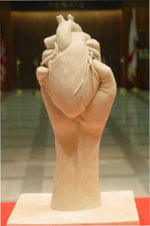- What is Angina Pectoris and Unstable Angina
- Statistics on Angina Pectoris and Unstable Angina
- Risk Factors for Angina Pectoris and Unstable Angina
- Progression of Angina Pectoris and Unstable Angina
- Symptoms of Angina Pectoris and Unstable Angina
- Clinical Examination of Angina Pectoris and Unstable Angina
- How is Angina Pectoris and Unstable Angina Diagnosed?
- Prognosis of Angina Pectoris and Unstable Angina
- How is Angina Pectoris and Unstable Angina Treated?
- Angina Pectoris and Unstable Angina References
What is Angina Pectoris and Unstable Angina

Statistics on Angina Pectoris and Unstable Angina
About 2% of the overall population suffer from angina pectoris as a result of coronary artery disease. The condition is much more common in older patients with the risk factors mentioned below.
Risk Factors for Angina Pectoris and Unstable Angina
There are many risk factors for coronary artery disease:
- Hypercholesterolaemia (elevated levels of cholesterol in the blood) plays a central role in the development of the plaques.
- Increased age and being of the male sex.
- Family history of coronary artery disease.
- Smoking: The risk is directly related to number of cigarettes smoked.
- Diabetes mellitus: Abnormal blood sugar levels promote vascular damage and the development of plaques.
- Hypertension: High blood pressure promotes artery damage which may initiate or exacerbate atherosclerosis causing plaque rupture. It should be noted that hypertension also worsens myocardial ischaemia (heart attack) through the adaptive changes it causes in the left ventricle. In hypertension the heart has to work harder to pump blood and as a consequence the left ventricle becomes hypertrophied (increased muscle bulk). This bulkier muscle then has higher blood requirements. This is theoretically independent of vessel narrowing.
Other, less important risk factors (soft factors) include:
- Stress/anxious personality.
- Obesity.
- Alcohol consumption. It should be noted that a variant form of angina pectoris exists called Prinzmetal Angina which usually occurs at rest. This is not due to atherosclerosis but rather to spasmodic contraction of the coronary arteries. Prinzmetal angina is rare.
Progression of Angina Pectoris and Unstable Angina
Early in the disease process angina pectoris (chest pain) is experienced when the demand for blood is increased, as in exercise. Angina may progress to become unstable angina. This is when the chest pain becomes more frequent, or begins to occur at rest. However a definitive diagnosis of MI cannot be made because no ECG or enzymatic patterns are seen. Left untreated, over 10% of cases will progress to frank MI (heart attack), consequently when it is discovered it is treated aggressively.
Symptoms of Angina Pectoris and Unstable Angina
Angina can limit the amount of work one is able to perform and can result in hospitalisation.if untreated it can result in a heart attack and death.
Clinical Examination of Angina Pectoris and Unstable Angina
The physical examination will involve the doctor taking the blood pressure,feeling the pulse and listening to the heart.
How is Angina Pectoris and Unstable Angina Diagnosed?
ECG (electrocardiogram): Resting ECG generally shows nothing in between attacks. During an attack, slight changes may be seen such as ST segment flatting or depression. Exercise ECG may be very useful in confirming a clinical diagnosis of angina by reproducing the symptoms.
Prognosis of Angina Pectoris and Unstable Angina
Angina spontaneously remits in 1/3 of patients. It is associated with a mortality rate of up to 4% per year depending on the number of vessels affected. Unstable angina has a higher mortality of 15% within one year if untreated.
How is Angina Pectoris and Unstable Angina Treated?
General treatment
This involves addressing the risk factors and counselling the patient to:
- Cease cigarette smoking;
- Lose excess weight;
- Achieve good diabetes control.
Medical treatment
Includes preventative therapy, symptomatic therapy, and interventions.
Preventative therapy
- Aspirin: reduces the risk of adverse events (myocardial infarction) by reducing the coagulability of the blood.
- Statins (eg. simvastatin): these drugs decrease the amount of cholesterol in the blood and increase the percentage of good fats (HDL- high density lipoproteins).
Symptomatic relief
- Vasodilators (Nitrates, Beta Blockers and Calcium channel blockers) all help to prevent attacks of angina. The nitrates (eg. GTN-glyceryl trinitrate) are particularly effective at relieving the pain of an attack.
- Heparin: In the case of unstable angina: use either in intravenous form or as low molecular weight heparin (subcutaneous).
- Analgesia: In the case of unstable angina morphine and metoclopramide may be given.
- Newer drugs such as the Potassium channel agonist Nicorandel and the Nitric Oxide modulator Perhexiline are being used in cases of angina which are not sufficiently controlled with more traditional regimes.
- The use of spinal cord stimulation is currently being investigated for treatment of chest pain in patients with Angina.
Interventions
- Coronary angioplasty: Percutaneous transluminal coronary angioplasty (PTCA) is a technique whereby a catheter is introduced into the coronary arteries by way of the femoral artery. When an area of stenosis (narrowing) is detected on angiography, it can then be stretched open by the introduction of a “balloon” which is inflated by the cardiologist. Once this has been achieved, a decision on whether to place a stent is made. A stent is a metallic mesh tube which then holds the stretched portion of the artery open, preventing re-stenosis. In general, patients with single discrete stenoses are good candidates for PTCA. In stable angina which is well controlled by medication, angioplasty may confer better symptomatic control but is of uncertain prognostic benefit.
- Coronary Artery Bypass Grafting (CABG): This is a surgical procedure where a donor blood vessel from another site in the body is used to bypass area of stenosis. CABG confers significant symptomatic and prognostic benefits in patients with severe triple vessel disease (areas of stenosis in all three coronary arteries). Wherever possible the LIMA (left internal mammary artery) is used to supply blood to the coronary circulation downstream from the stenosis. Grafts using the saphenous vein (from the leg) are still frequently used. Newer minimally invasive techniques using laparoscopic (keyhole) technology are currently being developed.
More information
 |
For more information on keeping your heart healthy, including information on how the heart works, the effect of cholesterol and eating for heart health, as well as some useful videos and tools, see Heart Health. |
Angina Pectoris and Unstable Angina References
- Kumar P, Clark M (eds). Clinical Medicine (5th edition). Edinburgh: WB Saunders Company; 2002. Book
- Longmore M, Wilkinson I, Torok E. Oxford Handbook of Clinical Medicine (5th edition). Oxford: Oxford University Press; 2001. Book
- Topol EJ (ed). Textbook of Cardiovascular Medicine (3rd edition). Philadelphia, PA: Lippincott Williams & Wilkins; 2007. Book
- Grundy SM. Coronary calcium as a risk factor: Role in global risk assessment. J Am Coll Cardiol. 2001;37(6):1512-5. Full text
- 27th Bethesda Conference. Matching the Intensity of Risk Factor Management with the Hazard for Coronary Disease Events. September 14-15, 1995. J Am Coll Cardiol. 1996;27(5):957-1047. Abstract
- Kelemen MD. Angina pectoris: Evaluation in the office. Med Clin North Am. 2006;90(3):391-416. Abstract
- Third report of the expert panel on detection, evaluation, and treatment of high blood cholesterol in adults (Adult Treatment Panel III) [online]. Bethesda, MD: National Heart, Lung and Blood Institute; 2004 [cited 7 January 2008]. Available from: URL link
- Boden WE. High-density lipoprotein cholesterol as an independent risk factor in cardiovascular disease: Assessing the data from Framingham to the Veterans Affairs high-density lipoprotein intervention trial. Am J Cardiol. 2000;86(12A):19-22L. Abstract
- Beller G. Relative merits of cardiovascular diagnostic techniques. In: Braunwald E (ed). Heart Disease: A Textbook of Cardiovascular Medicine (6th edition). Philadelpha, PA: Saunders; 2001: pp 422-41. Book
- Abrams J. Clinical practice: Chronic stable angina. N Engl J Med. 2005;352(24):2524-33. Abstract
- Hoffman SN, TenBrook JA, Wolf MP, et al. A meta-analysis of randomized controlled trials comparing coronary artery bypass graft with percutaneous transluminal coronary angioplasty: One- to eight-year outcomes. J Am Coll Cardiol. 2003;41(8):1293-304. Abstract | Full text
- Hannan EL, Racz MJ, Walford G, et al. Long-term outcomes of coronary-artery bypass grafting versus stent implantation. N Engl J Med. 2005;352(21):2174-83. Abstract | Full text
- Al Suwaidi J, Holmes DR Jr, Salam AM, et al. Impact of coronary artery stents on mortality and nonfatal myocardial infarction: Meta-analysis of randomized trials comparing a strategy of routine stenting with that of balloon angioplasty. Am Heart J. 2004;147(5):815-22. Abstract
All content and media on the HealthEngine Blog is created and published online for informational purposes only. It is not intended to be a substitute for professional medical advice and should not be relied on as health or personal advice. Always seek the guidance of your doctor or other qualified health professional with any questions you may have regarding your health or a medical condition. Never disregard the advice of a medical professional, or delay in seeking it because of something you have read on this Website. If you think you may have a medical emergency, call your doctor, go to the nearest hospital emergency department, or call the emergency services immediately.







